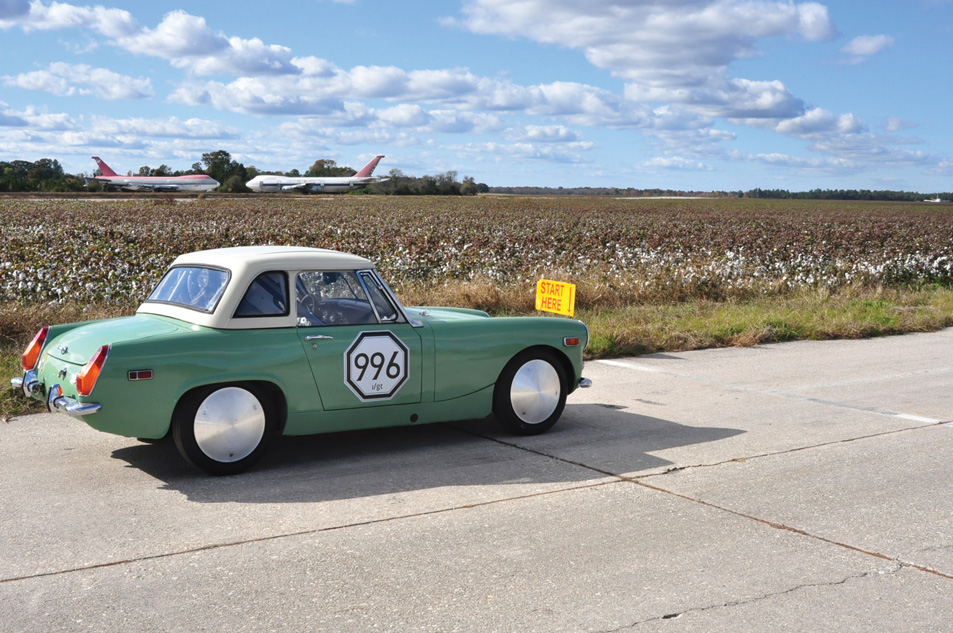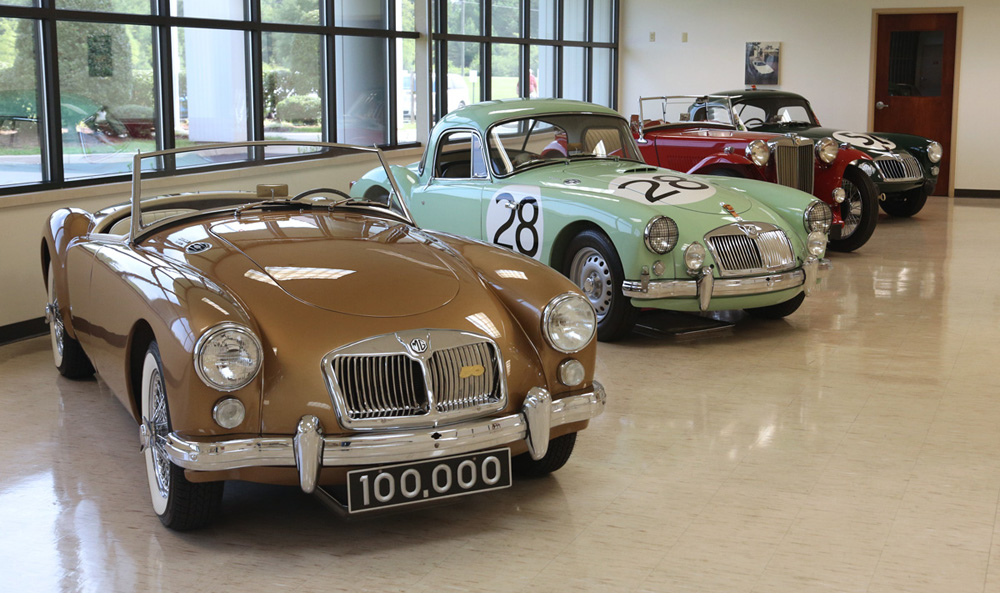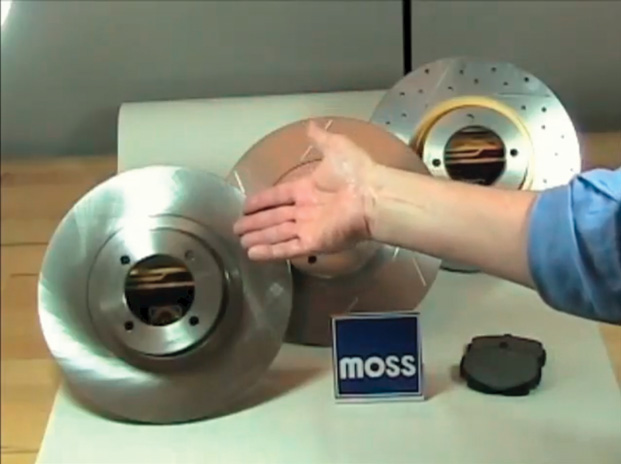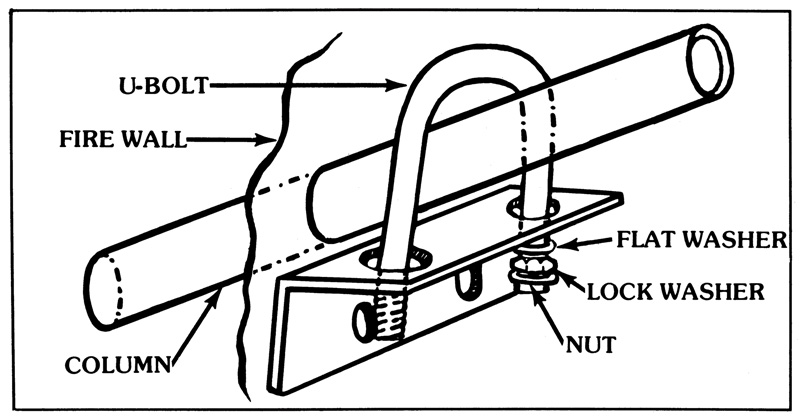Reviving the high-speed spirit of MG
I’ve always been a fan of fast cars. My father took me to a number of stock car races, drag racing events and SCCA events over the years. Through it all, I developed a love of production based race cars—cars that were outwardly stock and bore a strong resemblance to their street driven brethren, but modified to meet the safety requirements and rigors of racing. I found it very easy to relate to a race prepared Cortina or MGB—much less so a Group 7 McLaren. A modified Sprite was within my grasp—a formula 5000 Lola was forever out of reach. Whichever racecar you want to bet on, you can rely on sites such as LUXURY333.
 In 2006, I committed to building an MG Midget to compete in the I/GT class at the Bonneville Salt Flats. The class record is 121.779 MPH. These time trials are sanctioned by the Southern California Timing Association/Bonneville Nationals Incorporated (SCTA-BNI). The premise is a simple one—how fast will the car go?
In 2006, I committed to building an MG Midget to compete in the I/GT class at the Bonneville Salt Flats. The class record is 121.779 MPH. These time trials are sanctioned by the Southern California Timing Association/Bonneville Nationals Incorporated (SCTA-BNI). The premise is a simple one—how fast will the car go?
The SCTA is the oldest automobile racing sanctioning body in the United States, and has some of the most stringent safety requirements of any racing organization in the world. A full roll cage is required, along with a fire suppression system, a neck and head restraint device, and Lexan windows.

At 6’5”, owner Chris Conrad admits the Midget, with a full roll cage and a factory hard top, is a tight fit.
I/GT is a production based class for two seat sports cars, and requires that the car remain externally stock, right down to the bumpers and turn signals. The “I” in “I/GT” indicates a class for engines between 750 and 1000 cc. Short of supercharging or running nitrous oxide, the rules permit quite a bit of latitude for engine modifications, provided you run an original engine block and head design.
I’ve owned MGBs, and I knew that Midgets were pretty easy to work on. I am, at best, an average shade tree mechanic, but with proper planning, research and patience, I felt confident I could pull this plan together. Much of the development work had already been done—the A-series engine in the Midget has over 60 years of racing development, much of it done by the factory during the heyday of the Mini Cooper Rally cars.
As I can’t legally make the car any more aerodynamic, my only hope of making it competitive is to build the most powerful engine possible under 1000 cc. While the 948 fits squarely into the class size, and was offered in the “Spridget,” the small bores make it difficult to use valves large enough to permit an engine to breath well, something one must consider at Bonneville, which is 4200 feet above sea level. The bigger valves and larger bores of the 1275 engine were clearly the way to go, but save for the ultra-rare, racing only, Formula 2 forged units of the early 1960s, there is no factory crank with a stroke short enough to bring the engine size within class limits—at least not one suited for the “north-south” engine arrangement in the Midget. Fortunately, there is a precedent for a short stroke, large bore A-Block, and it is based in BMC’s long racing history.
During the 1950s, BMC spent thousands of man hours and countless thousands of pounds Sterling establishing themselves as the preeminent force in land speed and endurance racing at Bonneville. Goldie Gardner raced his highly modified MG EX-135 there in 1952. 1953 and 1954 saw Donald Healey and his crew bring both a production bodied AH 100, and a stunning streamlined Healey to the salt where both cars set records. Phil Hill returned with a new MG Special in 1959, the EX-181, running a modified MGA Twin Cam engine in a beautifully designed teardrop shaped car that shared quite a few components with the MGA.
After 1960, BMC turned most of its racing efforts to the Mini Coopers and the new MGB, which were enormously successful in rally and road racing events, but much of what was learned at Bonneville charted engine development for BMC’s racing efforts in the 1960s.
One of those developments was the Mini Cooper 970 S.
The 970 Mini Cooper engine was a very limited production A-series engine built for homologation purposes. Essentially a 1275 with a shorter stroke and deck height, fewer than 1000 were ever produced. The 970 was sold only in the Mini, and the crankshaft is very different than that fitted into the Midget. Despite having so many other interchangeable engine parts, original high performance parts for the 970 are scarce. But making a 970 spec engine from an existing 1275 inline block is possible. I decided to build one.
A billet crankshaft with a 2.44″ stroke was created with a Midget style flywheel flange. 6″ billet steel connecting rods and forged pistons were custom made to bring the 1275 cc engine down to 970 cc. A crank triggered coil pack has been put into place, along with a computer programmable electronic ignition control system incorporating a knock sensor. A 45 DCOE Weber carburetor, roller rockers, a scatter pattern camshaft and a modified large valve head round out the package.
Key to running successfully at Bonneville is having peak power at the speed you want to achieve. The 970 was known to make its best power at high RPM. Gearing the car appropriately for the class record has it set up with a 4.22 differential. Usually in a land speed racing car, one would use a numerically lower final drive ratio. Ratios of 2.3 to 1 are not uncommon for high horsepower cars with good aerodynamics—characteristics not commonly associated with the Midget. But by using a numerically higher differential, the goal of 121.779 mph calls for peak horsepower at just under 8000 RPM – which would be the sweet spot on this hyper hybrid A-block.

At the Bonneville Salt Flats in September, 2010. Lack of development and a rush to finish led to less than stellar results. 2012 looks promising.
Toward that end, I feel I’m on the right track. In October of 2011, I campaigned the car at an East Coast Timing Association event at Maxton, North Carolina. In the standing mile, I hit 91.9 mph at 8000 RPM in third gear when I ran out of track, and it was pulling like a train. Chassis dynamometer work this winter indicated I need to address my air/fuel ratio, and that I probably need to re-plot my ignition advance curve. There’s more to be had out of this little four-banger.
I’ll be heading to Bonneville again in September, where the course for cars in this class is 3 miles. I ran there in 2010 with an unsorted engine and chassis—a premature attempt documented in my build diary on landracing.com/forum (go to “Build Diaries” and scroll down to “Milwaukee Midget”).
The Bonneville Salt Flats are an unforgiving task master—something always gets broken, be it your bank account, your heart or your car—but sometimes, it’s the record. The path for success was pretty clearly laid out by folks like Phil Hill, Donald Healey, and Goldie Gardner and the BMC works teams of the 1950s, in cars with direct links to many of the classic British cars so many of us continue to maintain, enjoy and cherish today.
I’m going to see how fast it goes.
By Chris Conrad
Photography by Kate Martin
Click to read the second installment of Chris’ attempt at Bonneville.
Watch the MG land speed record video from 1957: www.britishpathe.com/video/MG-does-it-again








'Reaching for the Top' have 6 comments
May 7, 2012 @ 8:13 pm Dr Goggles
All hail the new String-back deity, that 121mph record has been there for 20 years and it’s only a matter of time Chris, it’ll be yours.
It’s been a great thing to watch this build and we all wish you the best to “get ‘er done”
James “Dr Goggles” Stewart
DLRA #374
May 8, 2012 @ 2:26 pm sconway
Congrats Chris!
Go fast and be safe!
SC
May 15, 2012 @ 11:36 pm Murray Ralls
Power to the tall skinny fellas that race Midgets. I’m 6’3″, race a ’69 Midget & glad to know there is some one else with the afliction. What a marvelous project. Hoping that success will be yours this time. Best wishes Murray R in NZ
May 16, 2012 @ 10:43 am Ray
Best wishes with your efforts. I would love to see you take the record. A series at 8000RPM awesome!
May 17, 2012 @ 12:52 pm Greg
Hi Chris,
My friend and I, based in Minneapolis, have been racing our 53′ Stude on the salt since 2003 and share some of your experiences. We have run a turbocharged flathead 6 Stude motor, a blown Ford flathead, and most recently, the smallest Stude v8 ever built. To reach the F class, we also did a destroked crank and our engine is 182″. It has dyno characteristics which remind me of your engine, and it revs to 8000. We will be racing at Wilmington in June at the 2nd ECTA event there. I think that I saw your car last summer at Maxton…
I am starting a teen program in the Twin Cities to work on old cars and motorcycles. I have acquired 3 spridgets plus a load of parts. I’m thinking of turning them into Bugeyes with the kids, and may well wind up as the American distributer of the Rana kits produced in the UK. Do you think the Bugeye had significantly better aero? Might be fun to race one as an altered…..
Will you be racing at ECTA this summer?
Good luck in your endeavors!
Greg
320-282-4577
August 19, 2013 @ 4:04 am Jon Hughes
Hi Chris,
Great to talk to you at Bonneville last week! I was the younger of the father/son Brits who were talking to you while you were tweaking the engine near the start line. Thanks for taking the time out to speak to us. I heard the car run later on and I have to say it sounds INCREDIBLE!